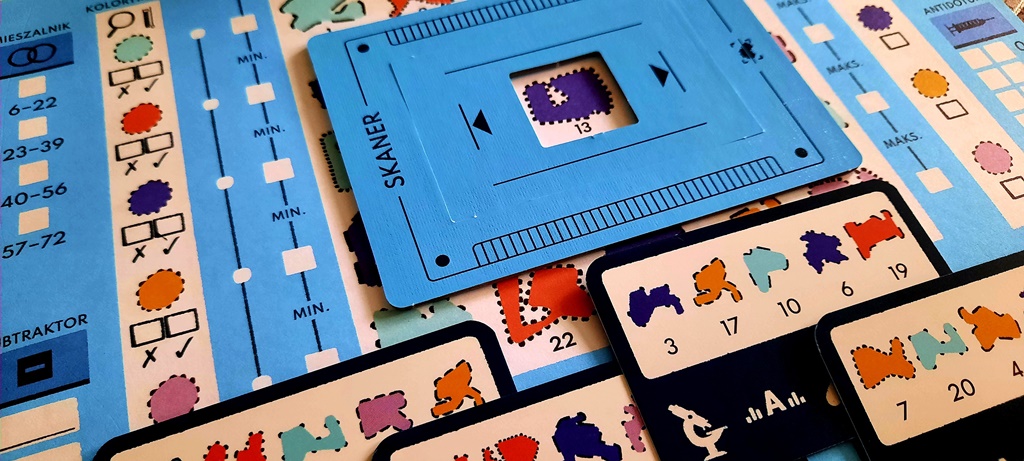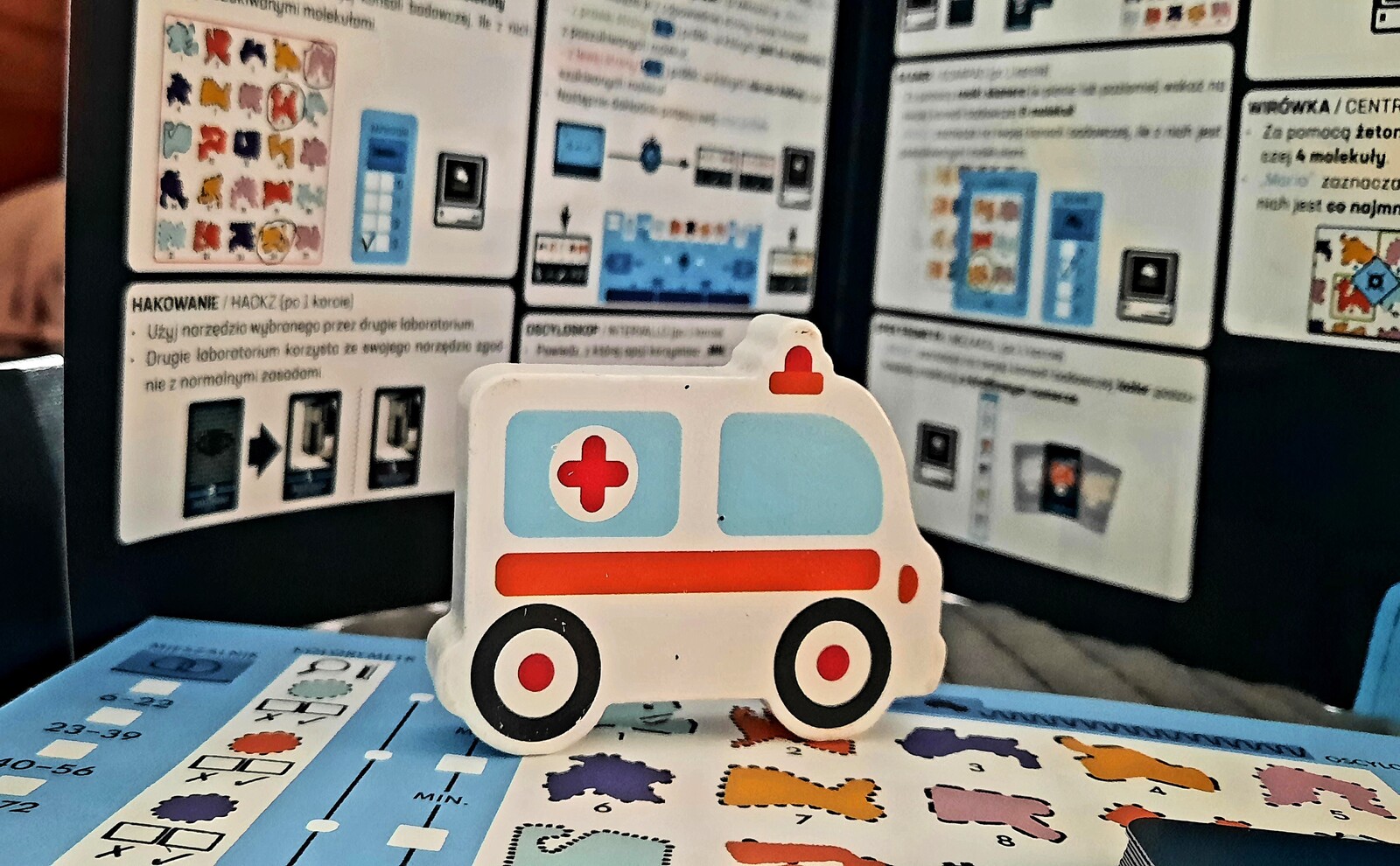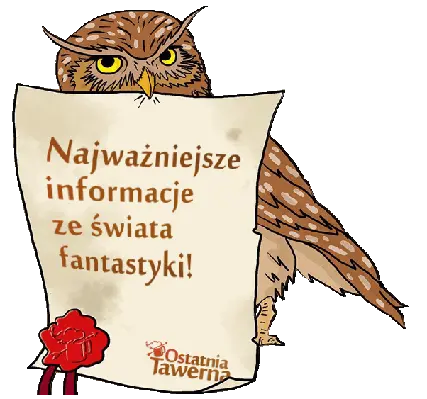Game preparation
Divide the players into two teams, which will then create two labs – blue and red. Each of them takes one screen and elements in the selected color: research console – notebook, pencil, scanner frame, analytical balance token, centrifuge token, 24 tools, 40 samples (the last pile is shuffled and placed face down). In the meantime, the research computer “Maria” shuffles 25 molecules and randomly selects 3 of them (looks at them, then puts them face down, the rest puts in a pile next to it). The drawn cards represent 3 molecules that the labs are looking for. At this point, it is worth paying attention to the graphic design of the offer from Our Księgarnia Publishing House – it is extremely colorful and at the same time economical. I really like it!
Tools
The authors of the game recommend starting the first game with the use of specific tools. Regardless of whether you choose this solution, there are two phases to be mentioned: choosing tools and using tools. There are: antidote (antidote), hacking ( hack ), mixer ( fuzio ), oscilloscope ( intervallo ), scanner ( scanpad ), spectrometer ( mesacol ), subtractor ( subtrakto ), espionage ( spionado ), analytical balance ( estugamo ), centrifuge ( centrifugo ), microscope ( microscope ), sampler ( samply ), analyzer ( analyzer), reducer ( dedukto ), colorimeter ( kolozomi ). Next to the Polish names of tools there are names in Esperanto – as they appear in the application. Thanks to the tools, we receive various information to bring us closer to victory. They should be marked on your research consoles – notebooks, e.g. by crossing out the molecules indicated by the tools as not those that are sought.

And action!
At the start of the round, each lab chooses one tool from its stack, then hands it face down to “Maria”. The computer reveals the tools received from the labs, then the teams use the tool of their choice (only once, so think carefully!). The lab that has the oldest player on the team reacts first. In the next round – their opponent. The laboratories put the used tools (picture up) in front of their screens so that they are visible to everyone. Information that we obtain during the game should be recorded on your research console. The round ends when both labs have used their chosen tools. The game is played when one of the laboratories uses the antidote tool to correctly identify the three molecules they are looking for.
Research computer “Maria”
“Maria” plays an extremely important role in the game, giving clues and answers to players (including marking things on your research consoles). The name is not accidental – it is a tribute to Maria Skłodowska-Curie, who dealt with issues in the field of physics and chemistry, winner of two Nobel Prizes. The role of the computer can be played by an additional player or a free application (designed for mobile devices with Android and iOS systems – Save Patient Zero ). In the one-person variant it is necessary, with more people you have an additional option – one of the people participating in the game can replace it. I played both variants and I recommend the participation of an additional player in the game (the application sometimes jams, which can be extremely frustrating).

Variants
Game designer – Cédric Martinez proposes a few variations for players who have this box in their possession. The first is Lone Scientist (solo game using the app), the second – Nothing works here! (1-7 players), other – Computer crashed! (for 2-7 players). Some of them can be combined with a variant for experienced players who want to add more variety to the game – Disruption (for 2-7 players). In my opinion, the last variant is the most interesting, although it all depends on how many people will take up the challenge and want to play Patient Zero. I appreciate the author and Our Bookstore Publishing House for including the solo variant, which is extremely important for people who prefer to spend time in this way (“Maria” will make up for the lack of company). The game time is 30 to 45 minutes, depending on whether we play with or without variants. And one more thing – it’s much easier to play in smaller teams than in larger ones (although a lot depends on the participants). Since we can’t reveal our future moves to our opponents, we need to communicate relatively quietly. But how if there are four people in our team? It will probably turn out during the game, but I am sensitizing you to this problem.
Final
I really liked Patient Zero deduction game . The mechanics are not complicated, and even if you don’t take the publishers’ advice and choose specific tools at the beginning of the first round, you should be fine. The publishers took care to maintain the climate – I was delighted with both the packaging of the package and its contents – a box with gummies (ahem, dangerous pathogens!) and a thematic mask that can be used during the game. It is true that Patient Zero cannot be classified as a difficult game (after a few rounds we already know the solution), but it has its advantages: fast gameplay, lots of accumulated fun! And science, ubiquitous science! We are saving the world after all!

